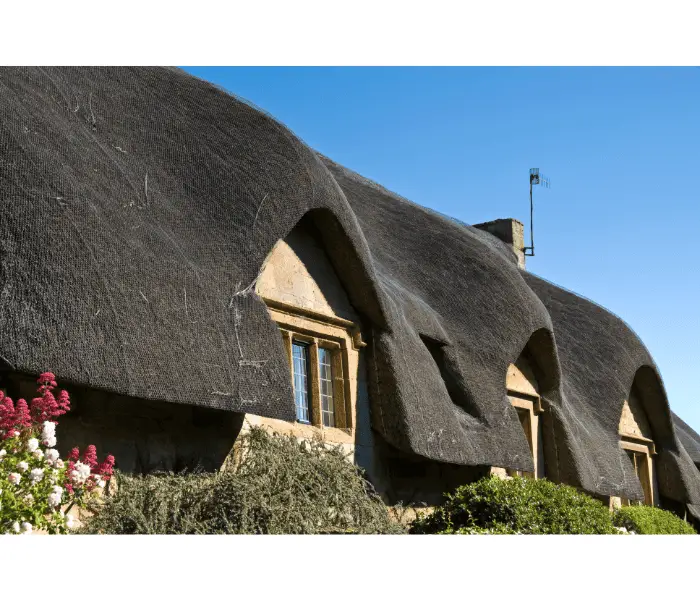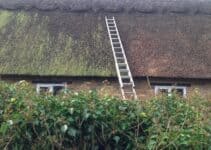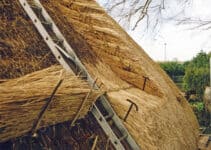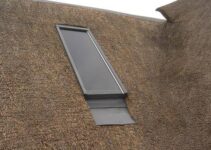If you’ve ever looked at a massive, thick thatched roof, you’ve probably wondered, how do houses with thatched roofs keep cool in summer?
The answer isn’t super complicated, so read on to find out more.
How do houses with thatched roofs keep cool in summer? Thatched roofs are surprisingly good insulators. While this keeps the heat in during the winter, it also helps keep heat out in the summer. If you understand the basics of insulation, you’ll know that the process goes both ways.
So, in the winter, people living in the house will produce their own heat. This might be via central heating or a fire. Either way, heat is created within the house.
During the summer, the house remains cool. Although not always the case, most older thatched buildings have thick, solid walls.
This helps keep the heat out, which is aided by the thick thatched roof.
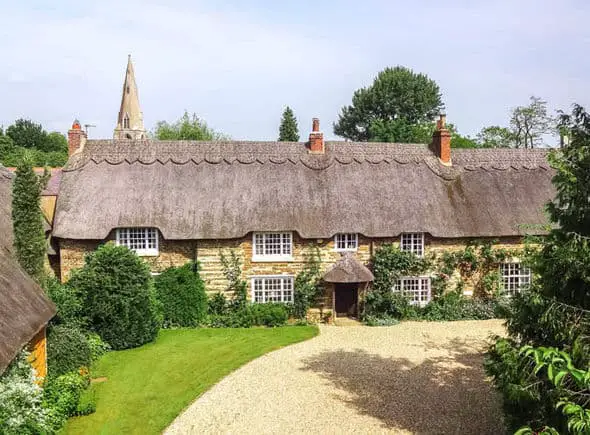
Why Do Houses with Thatched Roofs Keep Cool in Summer?
To understand why houses with thatched roofs keep cool in summer, we need to go over some basics of thermal insulation.
Heat transfers through different materials using conduction, convection, or radiation. For the purposes of this discussion, air is also a ‘material’.
Some materials transfer heat better than others, and air is an incredibly bad transmitter of heat.
Plenty of factors influence heat transfer, including the material, its density, its colour, and whether it’s shiny or dull. Air isn’t dense, coloured, shiny or dull, so lacks basically any decent heat transfer capabilities.
A thatched roof consists of straw or reeds and air. There’s lots and lots of air. We consider this air to be ‘trapped’ because there are essentially empty pockets between the pieces of straw, which are all filled with air.
So, when we think about a thatched roof’s thermal insulation, the air is the important part. Straw or reeds aren’t worth considering because they’re neither good nor bad at transmitting heat.
When heat transfers through a material, it expends energy heating up the molecules, which causes them to vibrate. As such, there’s only so far heat can transmit before it runs out of energy. 0
The air pockets in a thatched roof are heated, causing energy to be expended before it passes all the way through.
It’s the same reason why materials such as fibreglass and mineral wool are such excellent thermal insulators. They’re full of air pockets, so it’s the trapped air that does the insulating, not the material itself.
How Do You Heat a Thatched Cottage?
On the contrary, although thatched cottages do remain cool in summer they can also get freezing in winter! So its important to know how to heat it in such circumstances.
To heat a thatched cottage, certain considerations should be kept in mind due to the structure’s unique materials and design. Fire safety, paramount in such environments, is crucial to remember.
Begin by choosing an appropriate heating method. A popular choice for such cottages is electric heating, known for its safe, efficient, and controllable nature. Install electric radiators strategically around the cottage. They’ll evenly distribute heat while minimizing risks associated with open flames.
Consider also installing underfloor heating, particularly for rooms with stone or tiled floors. The process involves embedding heating cables beneath the flooring. This method provides an ambient, comfortable heat.
For a cozy, traditional ambiance, a wood-burning stove can be included, though it needs to be installed and used with caution. A professionally-fitted flue liner and a regularly serviced stove are musts. Regular maintenance checks should also be performed to ensure safety.
Insulation in a thatched cottage is key. Traditionally built thatched cottages are quite well-insulated, with the thatch itself acting as a natural insulator. Any drafts should be identified and sealed, and double-glazing can be introduced on the windows for added insulation.
Remember, a balance between maintaining the cottage’s character and ensuring warmth and safety is essential.
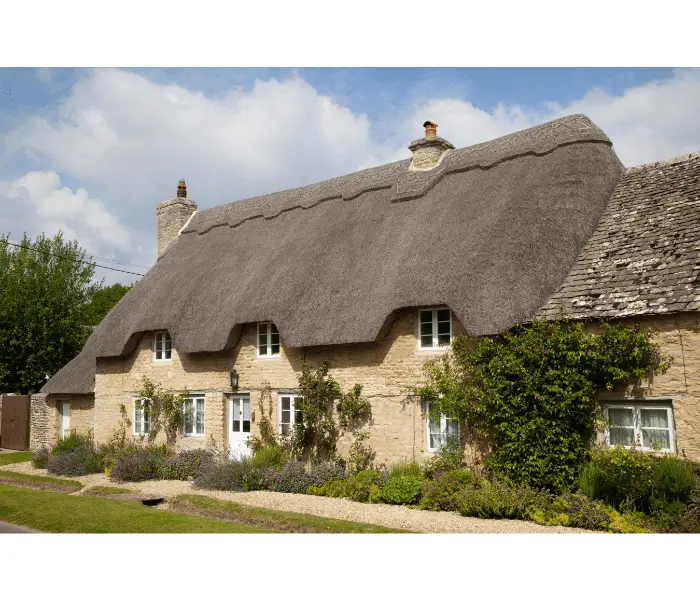
Final Thoughts on Keeping Thatched Roofs Cool
The bottom line is that thatched roofs are excellent thermal insulators. It means that they keep the building warm in winter and cool in summer.
A thatched roof, combined with whitewashed walls, results in an enjoyably cool home during the warmest months despite a lack of air conditioning.
Next time you’re looking at a thatched roof on a cottage, pay attention to how loosely packed the thatch is. You’ll be surprised how much air is actually in the roof!
